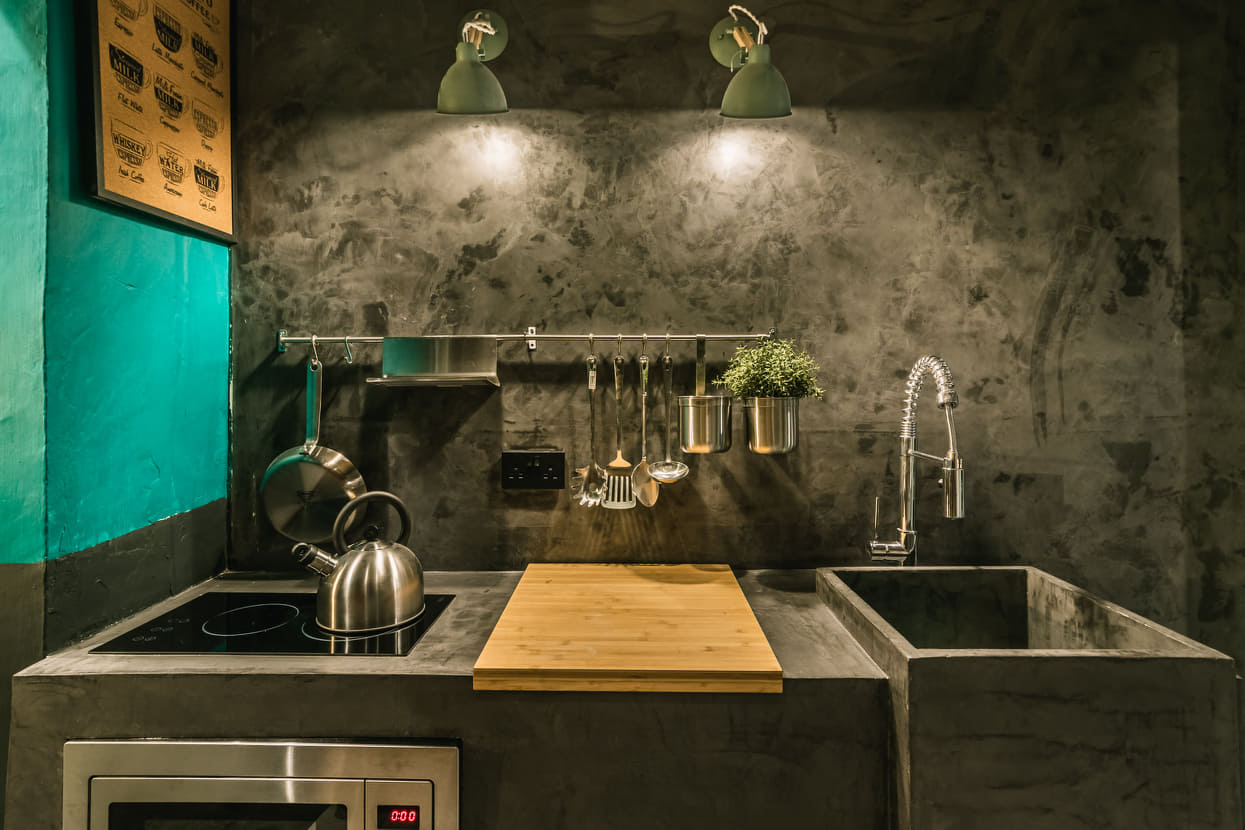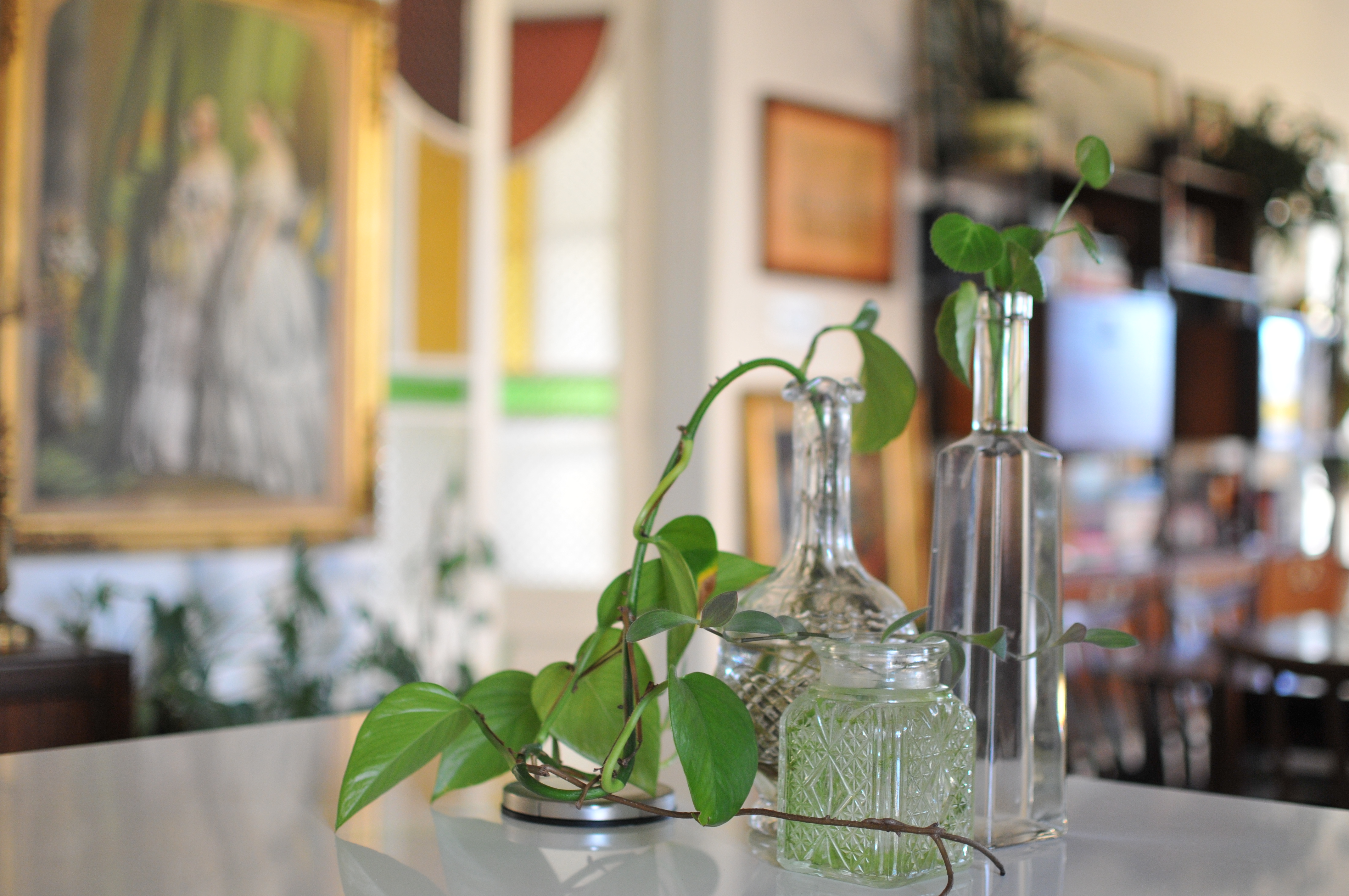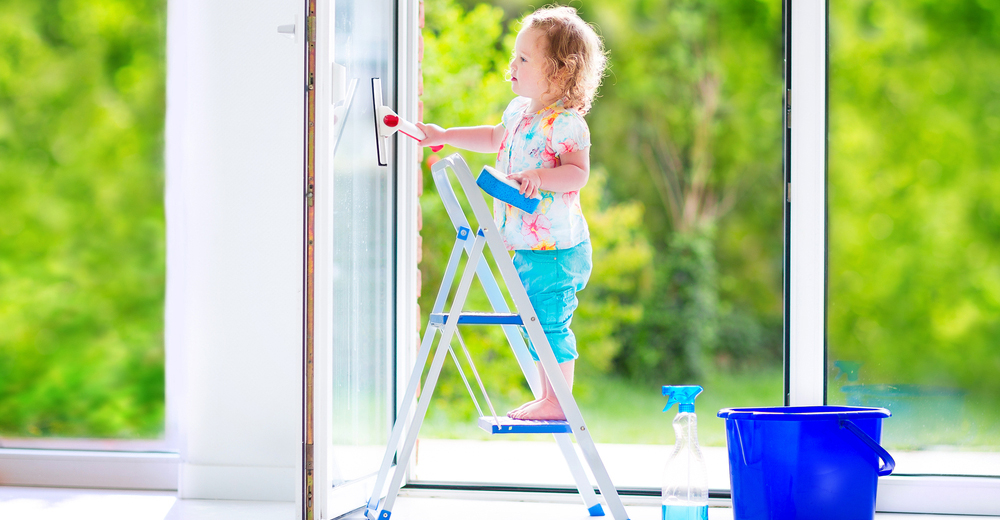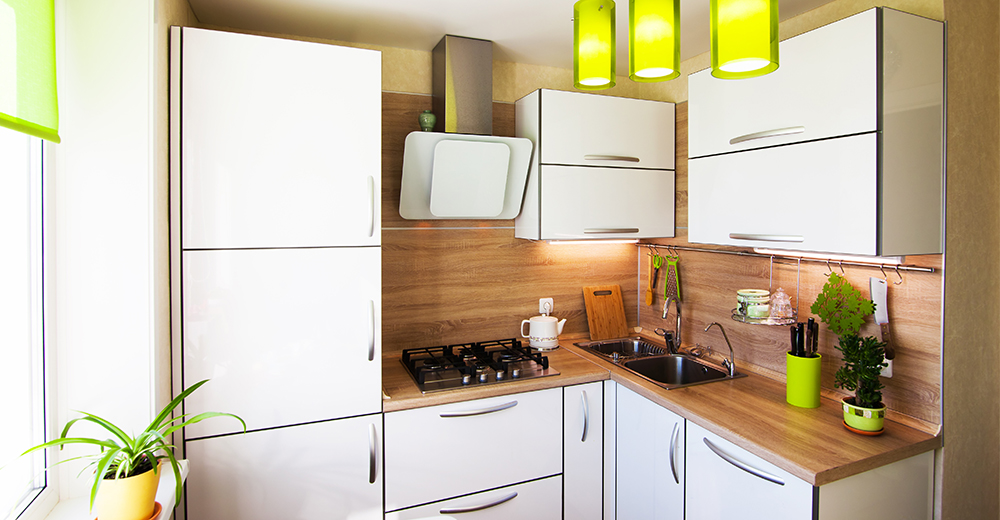First, let’s clear the air: The deterioration of indoor air quality by harmful chemicals and other materials can be up to 10 times worse than outdoor air pollution; fortunately, growing plants is an inexpensive and attractive solution.
Unfortunately, when it comes to plant care, Maltese housewives have major commitment issues. Most live under the assumption that plants can’t be taken care of easily, or that their presence won’t really make any difference in their life.
So, we have gathered a list of double-duty plants that are so easy to care for that you’d have to try pretty damn hard to kill them. They’re survivors, and even better? They’re amazing for your house, and extremely efficient at cleaning up the air around you. This list comes from NASA (big, American agency brimming with scientists), so we’re pretty confident.
And if that didn’t convince you to invest in growing plants in your home, the fact that they are a beautiful (and inexpensive) addition to any interior space might.
The 8 plants to green up your house (or office)
Aloe Vera

Those spiky leaves contain something magical. From relieving heartburn to potentially slowing the spread of breast cancer, researchers are just beginning to unlock the benefits of this universal plant and its many byproducts.
How to care for it
Aloe Vera doesn’t mind if you forget to water it a couple of times. just water it heavily once every week or two. It’s a desert plant, so don’t overdo it.
Remember: Limp or brown leaves also signal you’ve overdone the H20.
Plant aloe in a terra cotta pot with well-drained dirt. Keep in mind that it belongs in a bright, sunny place just don’t put it outside in blistering heat right away. Increase its exposure to the sun gradually.
N.B: Toxic to cats (doesn’t mean you can’t own one – but keep it out of reach!)
Peace Lily

Peace lilies enjoy medium to low light. Peace lilies that are placed in more light tend to produce the lovely white spathes and flowers more, while peace lilies in low light will bloom less and will look more like a traditional foliage plant.
How to care for it
Peace lilies are far more tolerant of underwatering than overwatering
Simply touch the top of the soil to see if it is dry. If it is, water your peace lily. If the soil is still damp, the plant does not need to be watered.
N.B: Toxic to cats (doesn’t mean you can’t own one – but keep it out of reach!)
Spider plant

This is a bit harder to care for than the two above, but absolutely perfect in an office or bedroom – the well-known Spider Plant is also a champion cleanser of air. The NASA tests showed it to remove around 90% of the potentially cancer-causing chemical formaldehyde from the air – a chemical found in most household detergents and sprays.
How to care for it
Spider plants do not appreciate direct, hot sunlight as it can burn their leaves – remember to keep them indoors and away from open windows.
In the spring and summer months, keep the soil moist to encourage growth.
Fertilize up to twice a month in the spring and summer.
A cool place is ideal for a spider plant to grow.
English Ivy
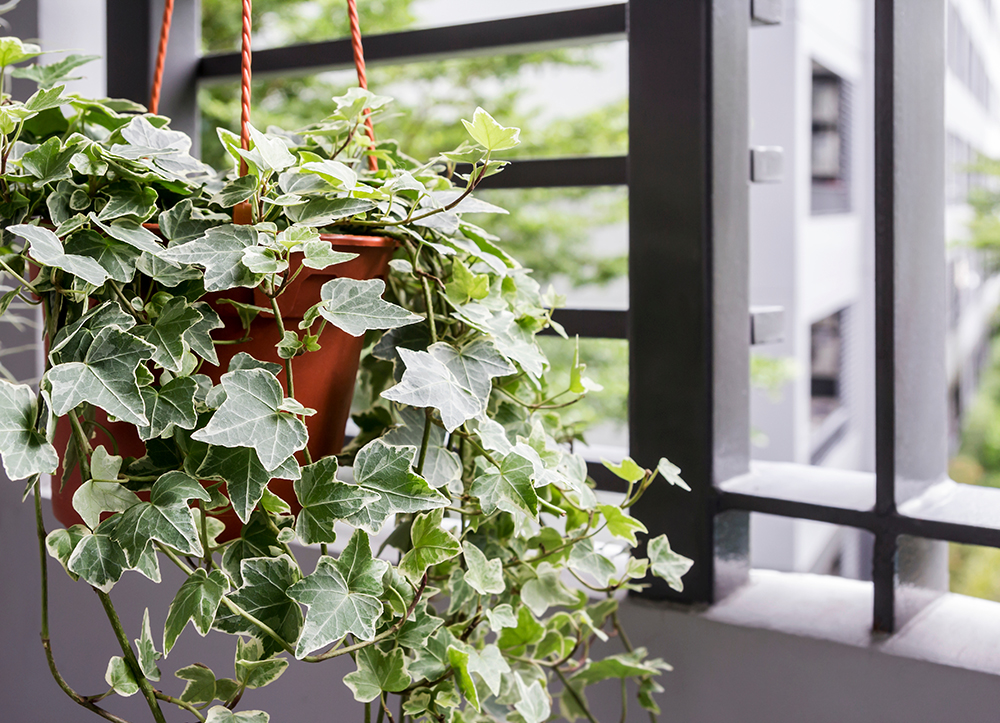
There is one natural remedy for airborne mould that allergy sufferers may not be aware of — English Ivy. Because it is great for preventing mould, it is perfect for Malta, where mould is a habitual issue. This plant is a rampant, evergreen vine and a superb climber, clinging to almost any surface by means of small roots that grow along the stems. You can also grow it in a pot with a shaped wire frame to create a topiary design. It has powerful anti-inflammatory effects, relieves congestion, and possesses a myriad of other benefits.
How to care for it
Plant English ivy in a shady area. If your soil lacks organic matter, amend it with compost before planting. Water them often enough to keep the soil moist until the plants are established and growing.
N.B: Toxic to cats (doesn’t mean you can’t own one – but keep it out of reach!)
Heartleaf philodendron
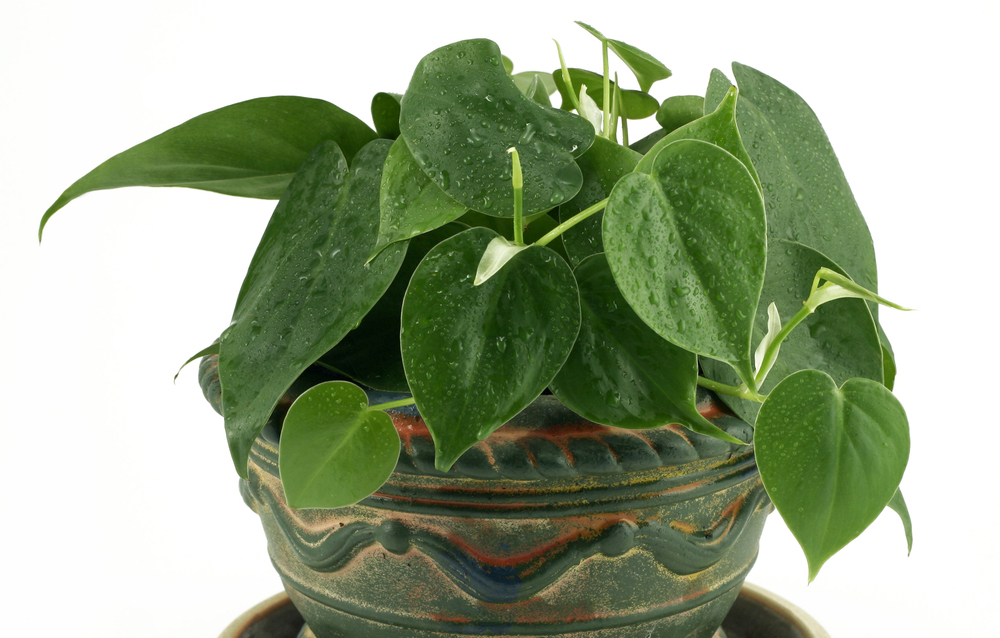
Heartleaf Philodendrons are some of the most popular indoor plants we use in homes and offices because they thrive on neglect and are almost impossible to kill.
NASA lists a Heartleaf Philodendron as a clean air plant that removes formaldehyde, a chemical found in insulation, floor coverings, cleaning agents, pressed wood, and even paper towels, from the air.
How to care for it
Never put any philodendron plant in direct sun.
Water well and then allow the top 50% of the soil to dry out before watering again. Yellow leaves on a Heartleaf Philodendron indicate over-watering and brown leaves mean the plant needs more water.
Feed a Heartleaf Philodendron monthly in the spring and summer with a basic houseplant food diluted to 1/2 the recommended strength.
N.B: Toxic to cats and dogs (doesn’t mean you can’t own one – but keep it out of reach!)
Eucalyptus
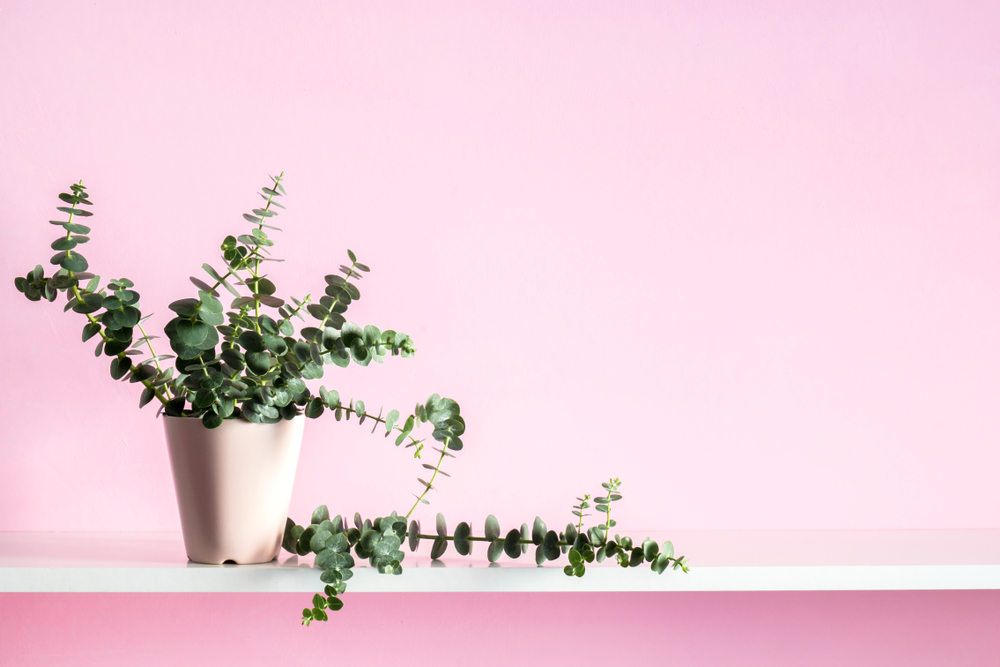
Outside, these evergreen trees grow to 18 metres tall, moreover, the way their half-moon-shaped leaves flutter in the breeze spreads a delicate aroma, making them perfect for creating an atmosphere. The tree grows well indoors too, indeed eucalyptus houseplants grow so fast that they can be grown and replaced with a new one annually.
How to care for it
If you’re planting it inside and intend to transplant it once it grows, plant your tree in a large, cone-shaped Air-pot. If planted in a round pot, its roots will circle around the base and make it impossible to transplant. Plant it in well-drained, fertile soil and give it ample water on a regular basis. Once a week, add liquid food to your plant water. Do this from early spring through the end of summer to feed your eucalyptus houseplant. Use a low nitrogen fertilizer.
Thrives in direct sunlight.
N.B: Toxic to cats (doesn’t mean you can’t own one – but keep it out of reach!)
African Violets

There’s nothing quite like getting the best of both worlds – such is the case with African Violets plants which merge the easy care and health benefits of houseplants with the beauty and wonder of flowers.
How to care for it
Moderate to bright, indirect, indoor light. For best results, place your Violets in a window where they will receive light most of the day,
Keep soil moist to dry, and allow soil around roots to dry out before watering to encourage blooming.
Chinese Evergreen

Growing Chinese evergreens can make even the novice indoor gardener look like an expert. This tropical foliage plant is one of the most durable houseplants you can grow, tolerating poor light, dry air and drought – basically, it is perfect for Malta!
How to care for it
Chinese evergreen plants thrive in medium to low light conditions or indirect sunlight. When it comes to soil, it prefers an equal mix of potting soil, perlite and sand.
N.B: Toxic to cats (doesn’t mean you can’t own one – but keep it out of reach!)
Last note
Indoor air pollution can be caused by pollen, bacteria, moulds, and carbon monoxide as outdoor air contaminants like car exhaust find their way into buildings, where they accumulate. Modern houses and offices are particularly vulnerable: draught-free spaces built from modern materials are usually not sufficiently air ventilated and can severely compromise our health. Given that -statistically – people spend more than 90 percent of their time indoors, air quality matters.
Are you growing any of these plants, or have some suggestions for plants we could add to the list? Comment below with your suggestions, and tag friends who could benefit from this!









